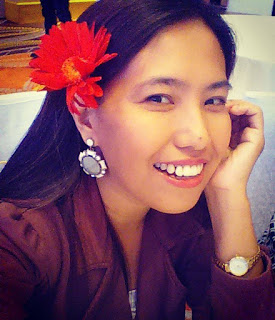Dengue is a high-profile and ongoing public health concern in the Philippines. The first known epidemic of severe dengue or dengue hemorrhagic fever anywhere in the world was recorded in Manila in 1953. (Gubler, D. J. (1998, July). Clinical Microbiology Reviews. Retrieved from American Society for Microbiology. http://cmr.asm.org/content/11/3/480.long)
By the mid-1970s, severe dengue had become a leading cause of hospitalization and death among children in the region. (Anonymous (1986) Dengue hemorrhagic fever, diagnosis, treatment and control. (World Health Organization, Geneva, Switzerland).
Between 2004 and 2010, the Philippines experienced the seventh highest number of dengue cases in the world according to the World Health Organization (WHO). (World Health Organization. (2012) Global Strategy for Dengue Prevention Control. 2012-2020. http://apps.who.int/iris/bitstream/10665/75303/1/9789241504034_eng.pdf?ua=1)
2016 data suggests an increasing trend in reported dengue cases
In 2013, DOH reported 204,906 cases of dengue, the highest number recorded since the establishment of the National Dengue Prevention and Control Program in 1993. More than 200,000 dengue cases were reported in the Philippines in 2015, 80,000 more than were reported in 2014. (Philippines dengue fever cases update and Dengvaxia plan, March 14, 2016. http://outbreaknewstoday.com/philippines-dengue-fever-cases-update-and-dengvaxia-plan-76200/).
In both September and October 2015, the number of reported cases rose above the epidemic threshold. (WHO Western Pacific Region Dengue Situation Updates. http://www.wpro.who.int/emerging_diseases/DengueSituationUpdates/en/)
Although the number of reported dengue cases slightly decreased in 2014, the 2015 data suggest an increasing trend in cases in the coming years. (DOH to provide dengue vaccine for poor Filipino children in NCR, Regions III and IV-A, Press Release, January 4, 2016, http://www.doh.gov.ph/node/3784)
Recent data gathered by the Department of Health from January to 24 September this year shows an increase of 11.5 percent year on year across the country, with total dengue infections at 142,247 compared to 127,525 last year and 604 recorded fatalities ( Philippines data provided by Epidemiology Bureau of DOH.)
Based on Philippine surveillance data collected between 2011 and 2015, an average of 220 dengue cases were reported in the country every day. (DOH to provide dengue vaccine for poor Filipino children in NCR, Regions III and IV-A, Press Release, January 4, 2016.)
In 2015, almost 50% of reported cases came from three most urbanized regions: Region 3 (17.6%), Region 4 (17.3%), and the National Capital Region (12.6%). (Ibid.) Cases stemming from all four serotypes of dengue were reported in 2015. (WHO Western Pacific Region Dengue Situation Updates.)
Disease burden: US$345 million per year
The economic burden of dengue in the Philippines is substantial. A study published in 2015 estimated that between 2008 and 2012, clinically diagnosed dengue cases in the Philippines were associated with a direct medical cost (in 2012 US dollars) of $345 million annually. The study calculated the average cost of treatment per case to be $409, representing 16% of the Philippines’ 2012 per capita GDP. Sixty-five percent of cases were treated in inpatient hospitals, representing 90% of direct costs. (Economic Cost and Burden of Dengue in the Philippines. Am J Trop Med Hyg. 2015 Feb 4; 92(2): 360–366. http://www.ncbi.nlm.nih.gov/pmc/articles/PMC4347342/)
In addition to dengue’s burden on a household, the illness can adversely impact a country’s economy through a loss of productivity caused by the illness and pre-mature death, increased healthcare costs and a possible reduction in tourism. (Ibid)
Seasonality and global climate change
Dengue has become a year-round threat in the Philippines. However, data suggests that the number of dengue cases increases one to two months after the onset of the rainy season, resulting in a peak of dengue cases between July and November each year. (Epidemiology of Dengue Disease in the Philippines (2000–2011): A Systematic Literature Review. http://www.ncbi.nlm.nih.gov/pmc/articles/PMC4222740/)
The Philippines is severely affected by extreme weather events and is vulnerable to the effects of climate change. Vector-borne diseases like dengue may be particularly sensitive to both periodic fluctuations and sustained changes in global and local climates. (Ibid.) Additionally, a study examining data from eight Asian countries including the Philippines over 18 years revealed a strong correlation between regional dengue epidemics and elevated temperatures associated with El Niño. (Region-wide synchrony and traveling waves of dengue across eight countries in Southeast Asia, August 25, 2015, Proceedings of the National Academy of Sciences of the United States of America. http://www.pnas.org/content/112/42/13069.abstract)
DoH implements a step-wise public vaccination program in 2016
The Department of Health announced on 4 January 2016 that one million (1M) nine-year-old Filipinos enrolled in government schools in Region 3, Region 4-A and the National Capital Region will be the first beneficiaries of the government-procured dengue vaccine. (DOH to provide dengue vaccine for poor Filipino children in NCR, Regions III and IV-A, Press Release, January 4, 2016.)
In a recent dengue vaccine cost-effectiveness study performed by Professor Hilton Lam of the UP-National Institutes of Health, a nationwide annual routine vaccination of nine-year olds starting in 2016 would lead to an estimated 24.2% reduction in dengue cases in the country over a five-year period. This would translate to 775,053 avoided cases of dengue, 502,000 avoided hospitalizations, 22,010 avoided deaths and almost Php 21 billion in avoided cost to society. (Lam H. et al. Cost effectiveness analysis of dengue vaccination in the Philippines. Presented at ICID, Hyderabad, India, March 2016. Abstract number 43.160.)




.png)




.png)







 />
/>












2 comments:
thanks for the info :) khryza1022@yahoo.com
Hope that there will be a dengue vaccine for 4 years old soon. I mean for younger kids and toddlers too. For now, since my daugther is only 4 years old, I am just ensuring to put anti-mosquito spray before she'll be out for school and even n our house, I am making sure that there is no stagnant water that mosquito can nest on.
Post a Comment